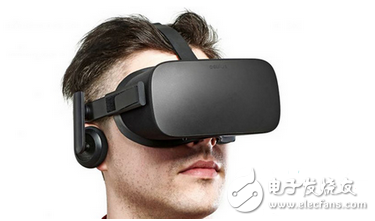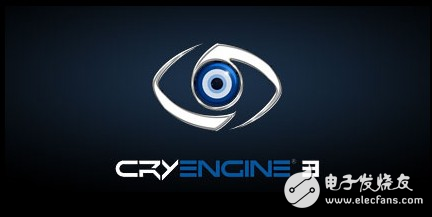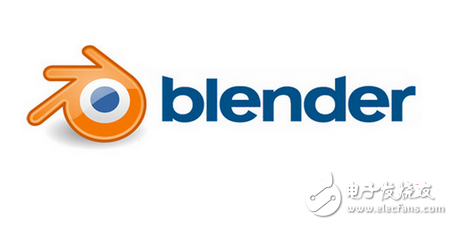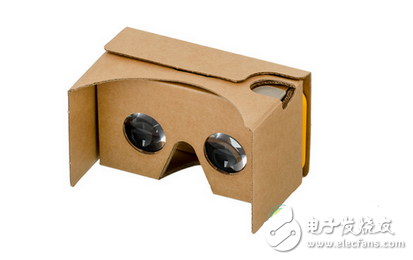Face the reality, life is very boring. Sometimes we feel that we really need another life, don't we? We all want to stay away from our current studies and work and step into a completely different world. Now, this is no longer a distant dream. In the past few years, virtual reality and augmented reality technology have made great progress, not just a concept in the lab. Therefore, as China's VR and AR technologies are developing rapidly, entering these two fields seems to be a correct career choice for YiVian. As with all emerging areas, we lack the necessary information to determine if we should do this. In addition, as with all industries, this requires specialized skills and specific needs, and access to this information will increase our chances of success in this industry.

Desire to be a VR or AR developer is not to be valuable, but it is not enough for you to move on. Remember when we were a child, I said that I want to be a scientist when I grow up? We have never specifically explained it. Children always say that they want to be scientists, not chemists, physicists and biologists. The current situation is not much different. The only difference is that we have to decide whether to enter the VR and AR fields at the beginning. Why is this so? Because the work involved in story creation, audio expertise, and 3D design, the work involved in this field is very different. At this stage, working on VR and AR has not only required technical experience. We still need some creativity now.
As this experiential medium emerges, students can choose from technical tasks such as programming, hardware, algorithms, and game development, as well as non-technical tasks such as business development, management, marketing, and operations. Chanda Singh, head of SmartVizX, said: "As with all real-time rendering projects, an AR/VR project involves two aspects: art and technology. If you have these two conditions, you can start such a project, but it's best to There are collaborations with experts in the field. So we need 3D designers to design art and programmers to add interaction and functionality to the experience. High quality AR/VR experiences require elaborate production and beautiful art, and need Understanding the human perception system. If I want to roughly classify the work that students want to do, there are three categories: art design, programming, and design.†According to industry experts and YiVian's large database, we list Some important positions in the VR and AR industries:
3D Designer (Content Coordinator)
Senior technical artist
3D designer
VR-AR Project Director
account Manager
Marketing designer
Social media expert
Web developer
software engineer
Interaction Designer
Front-end/back-end developers
Design technician
Graphic designer
VR game designer
VR/AR programmer
Augmented reality application designer
FX Technology Artist
Game planning
Abhishek Gupta, co-founder and executive director of GreyKernel, has come up with an interesting way to help you decide which job you should be working on in VR development.
“Your choices need to effectively follow the lifecycle of experience production. The first skill set required is a story scripting designer who can conceive everything needed for the entire script, story, and final visualization; then, the 3D designer will design the experience. The required scenes, roles, and Assets; finally, when the 3D environment is ready, VR programmers will use the 3D environment to prepare the foundation for the VR/AR experience for the story.†He added, “Although all roles in VR/AR They are equally important/hot, but students of different levels and majors can find a suitable job according to their own interests. Creative content authors with strong scene construction and image imagination are usually in line with the story script designer. Work. Creative designers and developers who have a good understanding of global art creation and artistic style should seek the work of 3D artists. If you like games and logic programming, then VR developers are in line with your work."
2. Learning methodsOnce you've figured out the specific work, even the specific areas of VR and AR, you'd better start preparing.
SpectraVR executive director Sushant Baliga explained: “AR and VR technologies have many opportunities. But they are still in their infancy, especially in education. Although some universities offer short courses like Stanford, these courses are still very preliminary. Stage." He further added: "Developers mainly include 3D designers, Unity product managers, programmers, game developers and application developers. Non-developers include theater VR design, etc. Camera knowledge, shooting skills, projects Management, business model analysis, and more. Although the best way to teach yourself, you need to keep up to date with the latest VR situation, browse the latest VR blogs, forums, YouTube, attend conferences, and experiment with yourself. There are also a lack of relevant resources and courses. However, some international universities are offering related courses. The CS:498 course offered by the University of Illinois at Urbana-Champaign is to teach students basic VR knowledge and provide hands-on experience to let them know. How to make excellent VR content. Dickon, Australia VR also has a special laboratory for students through Unreal Engine 4 game engine and content for the Oculus Rift Vive development.
In addition, Udemy, an online education website, also offers a wide range of related courses, including virtual reality film production, and how to convert existing 3D projects into VR projects. Udemy's courses range from free to $50, and you can also take a free experience class before deciding whether or not to pay for it. As for augmented reality, Coursera offers a course called "GetTIng started with Augmented Reality", produced by the French Union of Telecommunications Schools (InsTItut Mines-Télécom). This creates a better atmosphere for the development of VR and AR talent. But Abhishek pointed out: "Unfortunately, there has not been any training for VR and AR in the past. But this ecosystem is getting better every day, and the university is trying to work with young startups in the VR and AR fields. Establish partnerships and build courses designed to enhance visualization. We also interact with some of the top universities in India and Singapore to create specialized VR learning modules."
3. "Army Library"Before you finish the course, even before you start learning more basics, you should know that there are many tools for technical and artistic design in the market. In fact, self-learning through these tools and online resources is currently the best way to gain VR and AR expertise. Non-shooting VR content usually has two main tools. Modeling tools let you build 3D worlds and their content; then real-time rendering engines help you create a complete VR experience. Here are some of the most popular real-time rendering engines:

Unreal Engine: For the game development staff, we don't need to introduce any of Unreal Engine. For this authoring engine that allows you to create retro 2D content and complete 3A realistic games, we are not surprised by the fact that we are entering the virtual reality world at the right time. They have a busy trading market where you can get the necessary resources. The Unreal developer community also offers a number of tutorials and demos. In addition, the Unreal game engine is free to use.

Unity 3D: Unity has grown from a small development engine to a major competitor to the Unreal engine in the past few years. With more and more VR devices on the market, Unity offers an opportunity for Unity to compete for market share with the Unreal engine. Unity is fairly easy to use, you can now download the Unity engine and start your first VR project. It is worth mentioning that the engine is also free.

Cryengine: This is one of the most visually pleasing development platforms available today. The game made with the Cryengine engine is perhaps the one that best captures the true potential of the computer. The free strategy of the two giants in the engine world also affects the pricing model of the Cryengine engine. Previously users had to pay for it, but now developers around the world can pay for the developer kit they need, and some features are even available for free.
Some popular modeling tools:

Blender: Open source software gives us some great options, and Blender is one of them. This free modeling and animation software has evolved into an industry-leading tool that is strong enough to compete with tools like Maya and SofTImage. Blender offers powerful tools and features that are the only tools that make you the world of complete games. The built-in game engine is also very useful, but not comparable to the game engine mentioned above. Like most great open source software, Blender has a very active community that provides a lot of useful content.

Sculptris: This is a small and powerful engraving tool. Although not very functional, the model created with the software feels like a real engraved clay with a lot of detail. If you want to try something different, try this tool.
Other: There are other excellent modeling tools on the market such as Sketchup Make, Wings 3D, Equinox 3d, Daz studio and 3D crafter. Shooting content refers to VR video, and there is a relatively high barrier to entry in hardware. But if you have a good set of equipment, then these software tools can help you make better VR content.
Adobe After Effects
Final Cut Pro
Kolor
Video STItch
PT GUI
Adobe Premier Pro
"Battlefield" For VR and AR applications, this will only be constrained by your imagination. Although these two markets have existed for some time, until recently, the emergence of lower-cost, more powerful hardware devices and smartphones, the demand for VR and AR content in various industries really began to become strong. Abhishek said, "AR has been here three years ago, but the penetration rate is almost static. But with VR getting an important breakthrough, the market has been keen on VR since the second half of 2015. In addition to the direct purchase of virtual consumers In addition to the reality of the show and Google Cardboard, companies have begun to promote the brand through promotions, even the free distribution of Google Cardboard, and this is becoming a key catalyst for VR popularization.

VR technology is also widely used in the construction and real estate sectors. More and more real estate developers are making relevant VR experiences, allowing potential users to perform virtual viewings. This not only helps them save the cost of maintaining physical model houses and apartments, but also expands the foundation of potential users, allowing consumers in more regions to remotely view virtual reality through virtual reality technology. Another promising potential market is education, and VR and AR content creation in the education and training industry has seen rapid growth. Some apps offer content for students of all ages through Google Cardboard or other similar heads. In addition, advertising and product demonstrations are also of interest for VR and AR applications. 4. Return VR and AR are still in their infancy, so it is difficult to assess salary trends. Companies that use VR as a promotional tool offer relatively low pay compared to average game developers. The average income of programmers will be more than that of designers, and more depends on the level of experience and employers. In contrast, a studio dedicated to developing VR content from zero may offer more salaries and its salary income will be higher than the industry average. For example, an excellent VR developer with less than three years of experience can easily earn large sums of income.

Whether you choose the VR and AR industries because of growing market demand, or because you are excited about creating your own world in any form, the field will provide you with plenty of opportunities. There are also quite a few companies working on this. GreyKernel is running a "VR Developer" community, hoping to bring all VR enthusiasts to the same platform. Abhishek Gupta pointed out: "We are organizing seminars and gatherings for enthusiastic VR development, promoting VR and AR in the form of free resources and learning sessions, and introducing considerations for crowdfunding on Kickstarter. Meraki VR is another A startup that offers VR courses at universities and educational institutions to build a strong VR and AR developer base and raise awareness of the medium.
Sairam Sagiraju, Creative Director of Meraki VR, said: “At Meraki, we use VR to create unique experiences for marketing, training, sports and entertainment. While VR has potential applications in many industries, will consumers I am equally excited about these applications? When will VR become mainstream and its implementation will remain a problem."
This is indeed a thought. Now that you know what's working in the VR and AR fields, the relevant knowledge training and "arsenal" are at your fingertips, and the "battlefield" and returns are ready for you. So what are you waiting for? I hope that in the near future you will see your shadow behind VR and AR content.
This Disposable Vape Pen's design simulates the use of ordinary cigarettes, which creates a more familiar smoking process, so this type of e-cigarette device is very popular. In addition to being economical and similar to smoking, this disposable vape pen is more compact, lighter, and convenient to travel and carry.
Features:
1. Streamline pocketable design, lightweight and portable.
2. Rubber painted surface, skin touch feeling, soft but non-slip.
3. Strong throat hit, all characteristic flavors satisfy your taste buds.
4. No button at all, inhale and enjoy it immediately.
1500 Puffs Disposable Vape, 1500 Puffs Vape Pen, 1500 Puffs Vape Bar, colorful vape pen,disposable vaporizers
Mainstay (Guangdong) biotechnology Co., Ltd. , https://www.heyleme.com